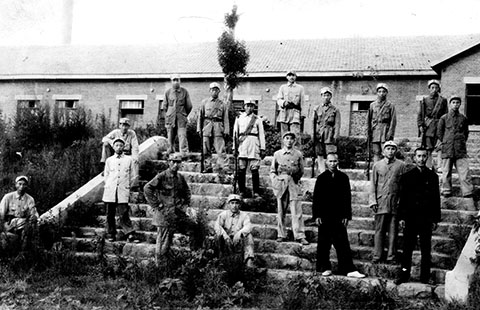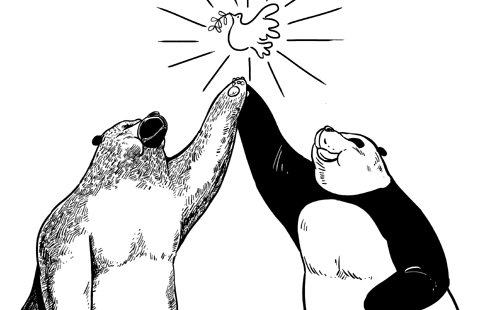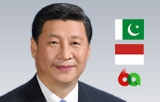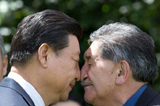Backgrounder: Basic facts about European, Asian battlefields in WWII
Updated: 2015-05-08 11:09
(Xinhua)
Comments Print Mail Large Medium SmallBEIJING - This year marks the 70th anniversary of the end of World War II, or the World Anti-Fascist War, a conflict marking one of the darkest periods in human history.
The following are some basic facts about the European and Asian battlefields:
The biggest war in history involved more than 60 countries and regions, caused huge casualties and losses, and affected some 2 billion people, about 80 percent of the world's population at that time.
In Europe, the Soviet Union was the main combat area in the fight against Nazi Germany, while in Asia, China was the main battlefront against the Japanese invasion. The United States and Britain were also core members of the anti-Fascist Allies, fighting against the Axis powers on multiple battlefronts.` WWII broke out on Sept.1, 1939, when Nazi Germany invaded Poland. The fighting quickly spread to other parts of Europe, as Germany and other Axis forces attempted to occupy more territories. Germany invaded France in May 1940 and forced the British and French troops to conduct the famous Dunkirk Evacuation.
Germany launched a blitz offensive against the Soviet Union on June 22, 1941, marking the start of the Soviet Union's Great Patriotic War, which saw some 27 million soldiers and civilians killed from 1941 to 1945.
The Battle of Stalingrad (now Volgograd), which took place between July 17, 1942 and Feb. 2, 1943, was considered the first substantial German land defeat of the war and one of the turning points. The three-phased battle began with a German offensive, followed by fighting among the rubble inside the city and ended with a Soviet counter-offensive and a decisive victory. Following that, the Soviet army liberated most of Ukraine and virtually all of Russia and eastern Belarus during 1943.
On June 6, 1944, Allied troops launched a surprise military operation, known as the D-Day Normandy Landings, in which more than 2 million soldiers from the Allies landed in Normandy of northern France. The massive operation began to regain German-occupied Western Europe and contributed to the victory of the Allied in the war.
In April 1945, the Soviet army launched its final assault on Germany and laid siege to Berlin. On May 2, Soviet troops took Berlin. On May 8, Nazi Germany surrendered unconditionally.
In Asia, China was the main battlefield of WWII, fighting against the Fascist Japanese starting on July 7, 1937, when full-scale war broke out between the two sides after the Imperial Japanese Army bombarded the city of Wanping near Beijing and assaulted the Lugou Bridge in Beijing.
Since the July 7 incident, the Chinese battlefield tied up about one million Japanese troops, or two thirds of the total Japanese army.
This allowed Stalin to deploy more than half a million troops from the Far East to the Soviet Union's major battlefield with the German Nazis, thus accelerating its victory against Germany.
As the Pacific War broke out in December 1941, following Japan's raid on Pearl Harbor, the Chinese battlefield continued to engage the majority of the Japanese army, greatly assisting the United States, Britain and other countries in their war against Japan.
As the major battlefield of the Pacific War, China inflicted heavy casualties on the Japanese, costing them 1.5 million troops.
But the Chinese people also paid dearly for this victory, with an estimated casualty of 35 million, both military and civilian, dead and wounded in the prolonged war.
On Aug. 15, 1945, Japan announced its surrender, and WWII ended after the United States dropped two atomic bombs on Hiroshima and Nagasaki on Aug. 6 and Aug. 9 respectively to force Japan to do so.
The United States and Britain were also core members of the Allies, with more than 400,000 Americans and 270,000 British soldiers killed in the war.
The Fascists of Germany, Japan and Italy ended up duly punished. Some 13.6 million German forces were destroyed or captured in the war, and Italy lost more than 160,000 people. Some 1.25 million Japanese forces were killed or wounded in the Pacific, besides the 1.5 million in China.






